Key takeaways
- Queer women culture is characterized by diversity, resilience, and deep connections formed through authenticity and support.
- Local shelters serve as vital community hubs, promoting safety, dignity, and breaking down isolation among individuals.
- Volunteering locally fosters meaningful connections and highlights the importance of sustained presence in building community ties.
- Challenges faced by queer women volunteers include emotional labor, feelings of being misunderstood, and the need for truly inclusive spaces.
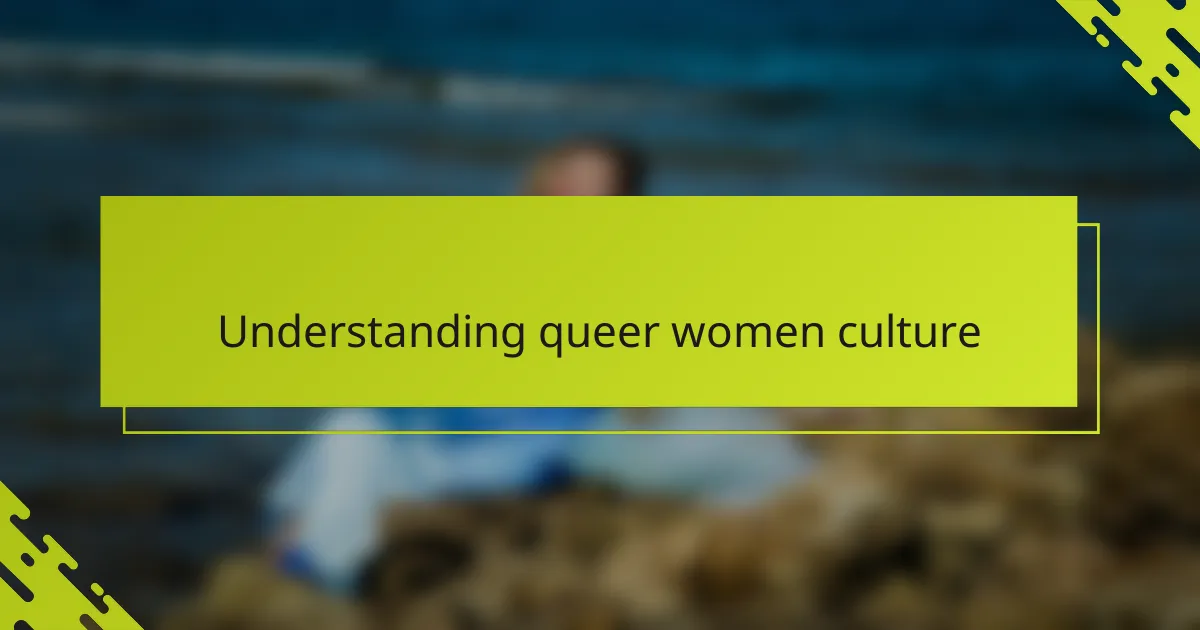
Understanding Queer Women Culture
Queer women culture is rich with diversity and resilience, shaped by shared experiences of navigating identity in a world that often misunderstands or marginalizes us. I’ve often found that this culture isn’t just about who we love or how we identify, but about the deep connections we build through authenticity and mutual support. Have you noticed how even simple gatherings can become powerful spaces of affirmation and belonging?
For me, understanding queer women culture means recognizing the layers of history, struggle, and celebration that inform our community today. It’s not a one-size-fits-all experience; each story adds texture to the broader tapestry. I remember conversations with friends where we’d uncover unexpected commonalities, reminding me how vital it is to listen deeply within our own circles.
What strikes me most is the creativity and strength that flourish alongside vulnerability in queer women spaces. There’s an unspoken code of empathy and acceptance that invites growth and healing. When we embrace these values, we create a culture that’s not just about survival, but about thriving together.
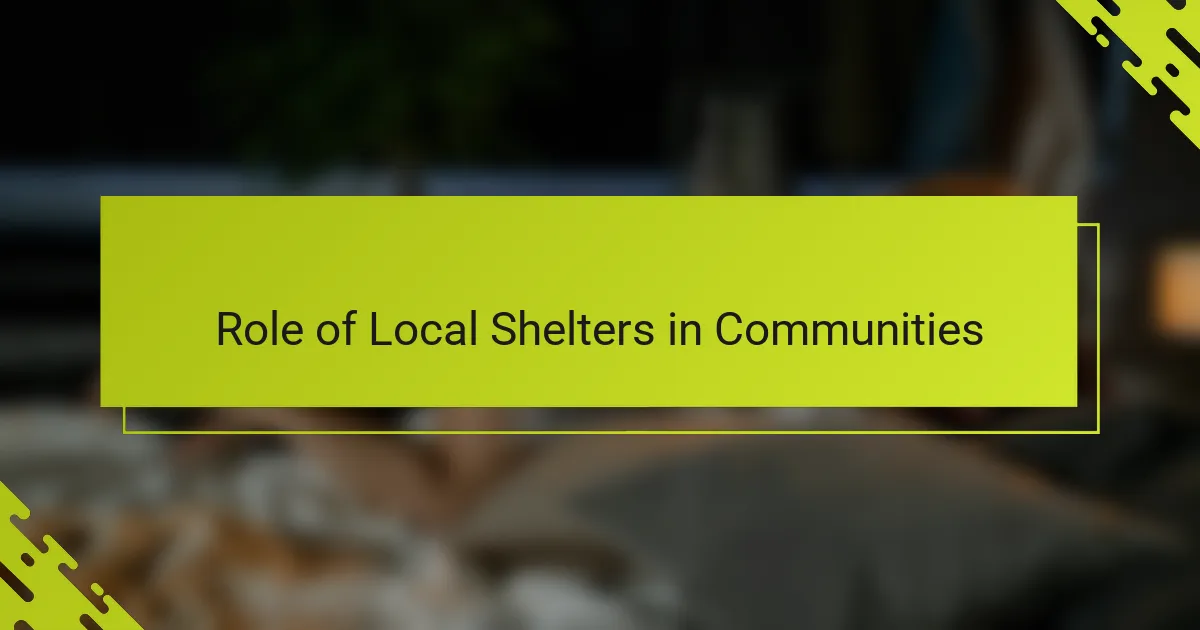
Role of Local Shelters in Communities
Local shelters often serve as crucial lifelines within our communities, providing more than just a roof over one’s head. From my experience volunteering, I’ve seen shelters act as hubs of safety and support where people regain a sense of dignity and hope. Have you ever noticed how these spaces quietly hold the stories of resilience and transformation?
What I find deeply moving is how shelters foster connections that break isolation—something many of us crave, regardless of background. When I helped at a shelter, I witnessed strangers become allies, sharing meals and moments that restored belonging. It made me realize shelters aren’t just buildings; they’re living, breathing parts of the community fabric.
Shelters also highlight the collective responsibility we share in caring for one another. They remind me that community isn’t an abstract idea but a series of acts—offering time, compassion, or even just a listening ear. How often do we consider that supporting shelters is one of the most direct ways to weave stronger, more inclusive neighborhoods?
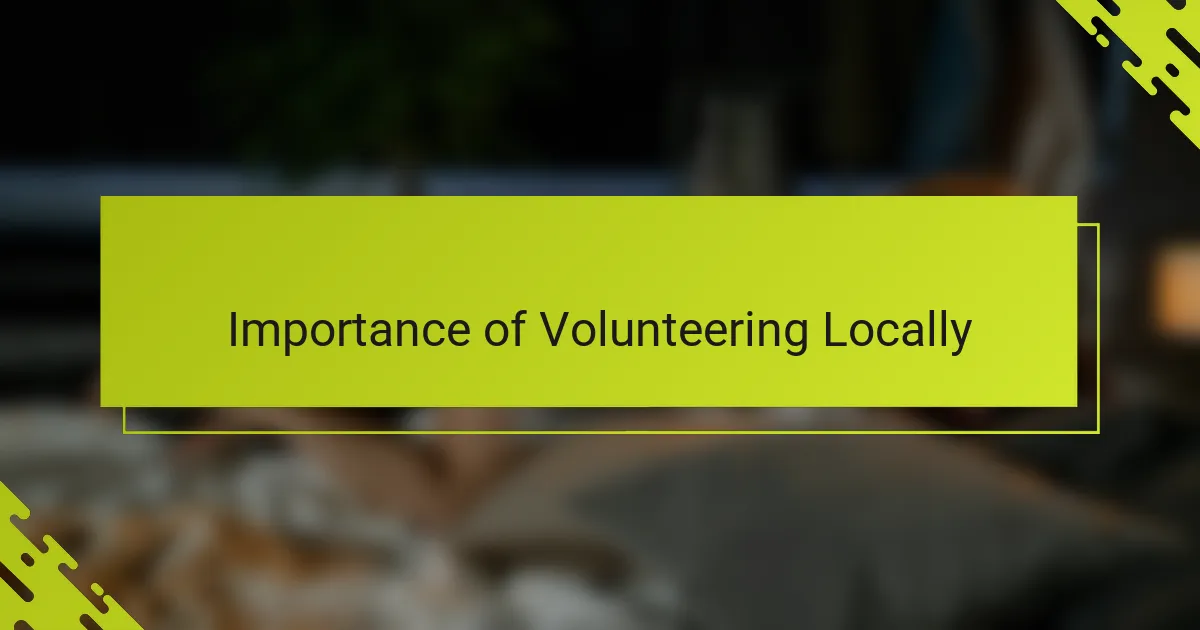
Importance of Volunteering Locally
Volunteering locally creates a unique opportunity to witness, firsthand, the impact of our efforts. When I first started helping at a neighborhood shelter, I was struck by how immediate and tangible the difference felt—each task was a small but vital thread strengthening community ties. Have you ever experienced that satisfying moment when a simple act of kindness turns into a meaningful connection?
There’s something deeply grounding about committing your time to a place nearby. It reminds me that change doesn’t have to be distant or abstract; it happens in our own backyards, among people whose lives intersect with ours in unexpected ways. That feeling of neighborly solidarity can be incredibly empowering, especially within queer communities where visibility and support matter so much.
Moreover, volunteering locally teaches us the value of sustained presence. It’s not just about one-off actions but about building trust and showing up consistently. Over time, I’ve noticed how those repeated efforts ripple outward, nurturing a sense of belonging that shelters—and communities—thrive on. Isn’t it comforting to know that your commitment helps cement that foundation?
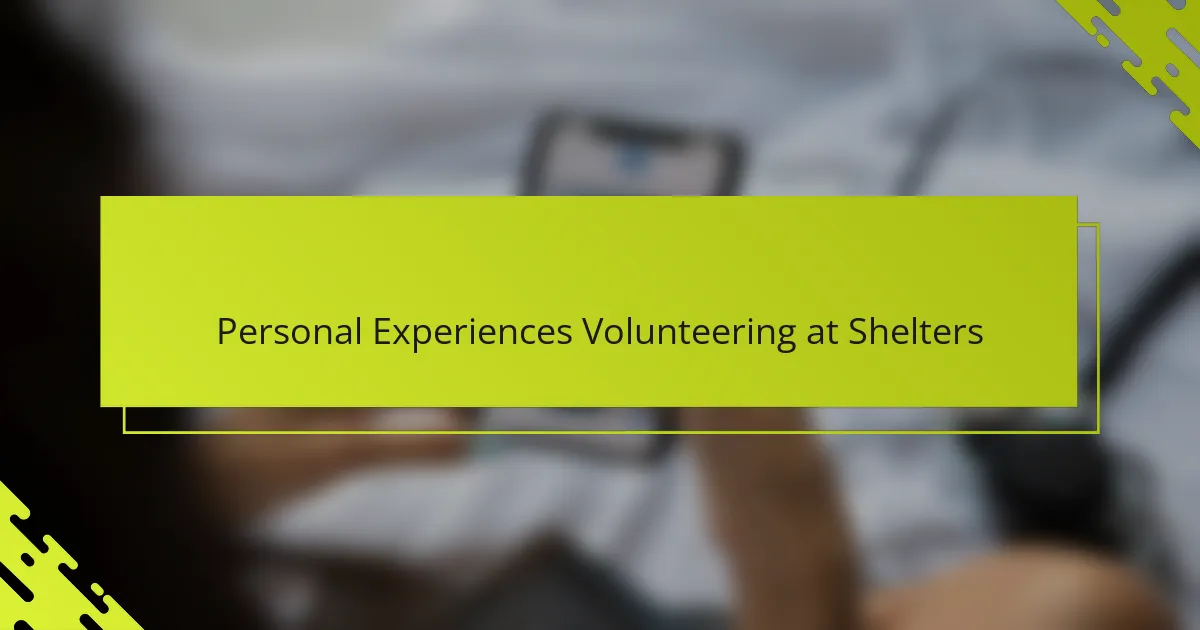
Personal Experiences Volunteering at Shelters
One afternoon, I was handing out blankets at a local shelter when a young queer woman shared her story with me—a mix of struggle and hope that struck a chord deep inside. Moments like that remind me just how much our presence, however small it may seem, can become a lifeline for someone in need. Have you ever felt that quiet but powerful shift when connection breaks through the walls of hardship?
Sometimes, volunteering at shelters feels like stepping into a space suspended between pain and resilience. There was a night I spent helping organize donated clothes, and I watched as a group of folks—each carrying their own burdens—laughed and shared advice. It’s humbling to witness these pockets of joy amid uncertainty, and it’s made me rethink what true strength looks like.
I often ask myself why these experiences resonate so deeply. I think it’s because volunteering at a shelter isn’t just about giving; it’s about receiving empathy and learning lessons in vulnerability. Each encounter has shaped how I see community and reminds me that building safety nets is a shared, ongoing journey. Would you agree that sometimes the greatest gift we offer is simply being present?
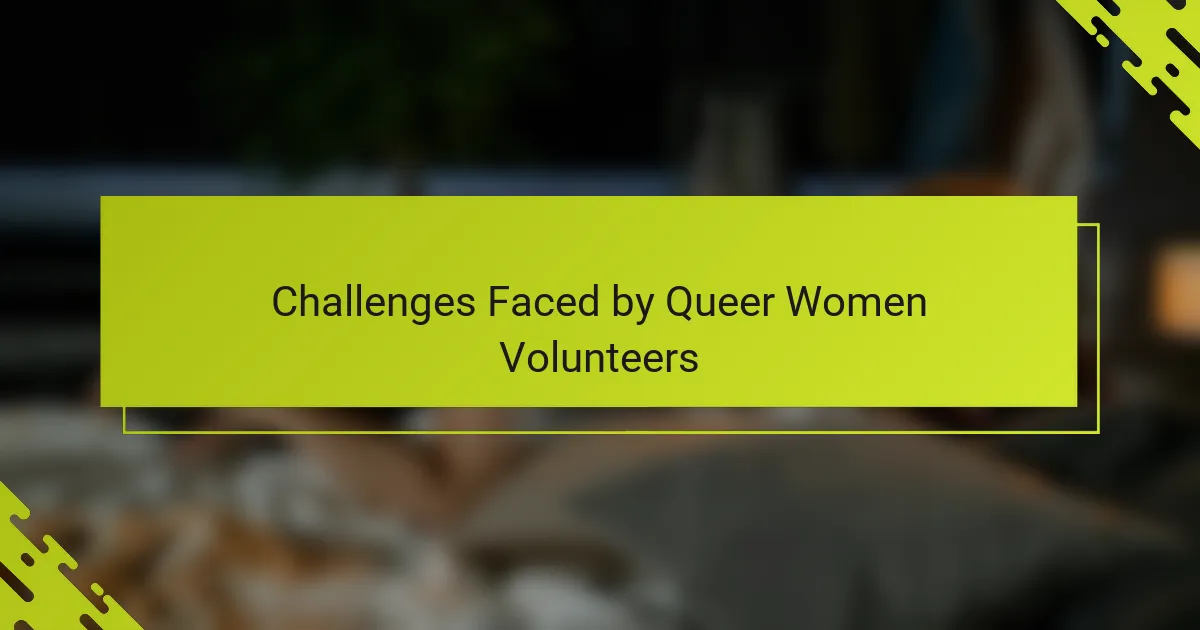
Challenges Faced by Queer Women Volunteers
Volunteering as a queer woman at local shelters isn’t without its challenges. I’ve noticed times when I felt unseen or misunderstood, especially when assumptions about my identity quietly influenced how staff or other volunteers interacted with me. Have you ever experienced that subtle hesitation, like you’re navigating an invisible barrier while trying to offer support?
At times, the emotional labor can be overwhelming. Balancing the weight of others’ trauma alongside the pressure of representing queer women authentically is no small feat. I remember one evening when I had to check myself because I was carrying not just the shelter’s hardships but also the exhaustion of explaining my identity to those who weren’t familiar or fully accepting.
There’s also the challenge of finding spaces within shelters that feel truly inclusive and safe. It’s tough when queer women have to negotiate visibility carefully to protect themselves, all while wanting to bring their whole selves to the work. Doesn’t it make you wonder how many lives, including your own, could be better supported if that sense of belonging were guaranteed?
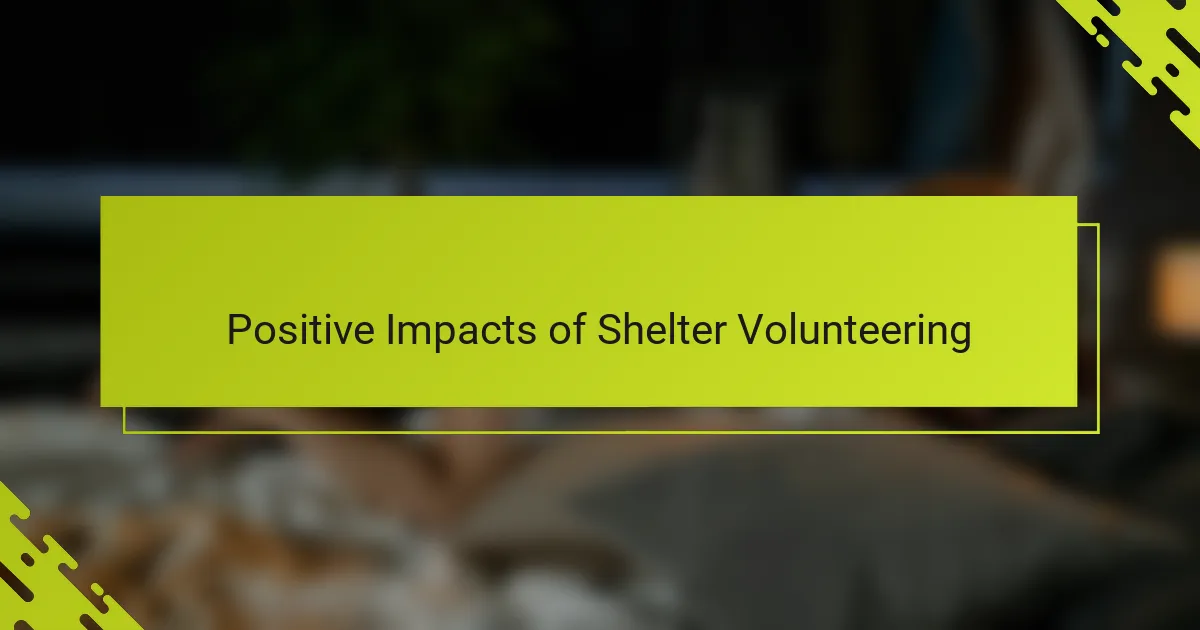
Positive Impacts of Shelter Volunteering
Volunteering at local shelters has this incredible ripple effect that goes beyond just helping others—it profoundly shifts how I see myself and my community. Each smile I receive or story I hear fuels a sense of purpose that reminds me why presence matters. Have you ever noticed how giving your time can spark unexpected moments of joy and connection that linger far after you leave?
There’s also a powerful sense of solidarity that grows as I work alongside others committed to caring for our neighbors. It feels like we’re weaving together many threads of compassion into a stronger, more resilient fabric. I often find myself reflecting on how these shared efforts make invisible struggles visible, creating a space where everyone’s humanity is recognized.
What strikes me most, though, is how volunteering nurtures hope—not just for those receiving help, but within me too. Witnessing resilience in action reminds me that healing and change are possible, even in the toughest of circumstances. Isn’t that what community is all about—lifting each other up when it matters most?

Tips for Effective Volunteering at Shelters
One thing I always keep in mind is to arrive with an open heart and a willingness to listen. When volunteering at shelters, it’s not just about completing tasks but about truly seeing the people behind the needs. Have you ever noticed how a simple moment of genuine attention can transform an exchange into something meaningful?
Organization and clear communication also make a massive difference. Early on, I realized that understanding the shelter’s routines and respecting the staff’s guidance helped me contribute more effectively and avoid unintended disruptions. It’s like being part of a team where everyone’s efforts build on each other—wouldn’t you agree that teamwork creates the strongest support?
Lastly, pacing yourself matters just as much as dedication. I’ve learned that burnout can sneak up quietly if you don’t set boundaries and recognize when to step back. Caring for others is important, but so is caring for yourself—how often do we remind ourselves that sustainable volunteering sustains both giver and receiver?
